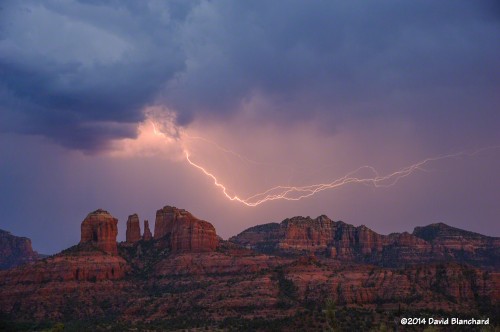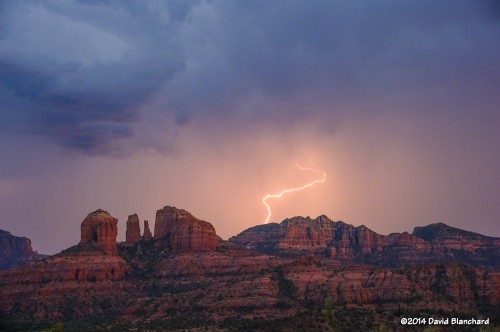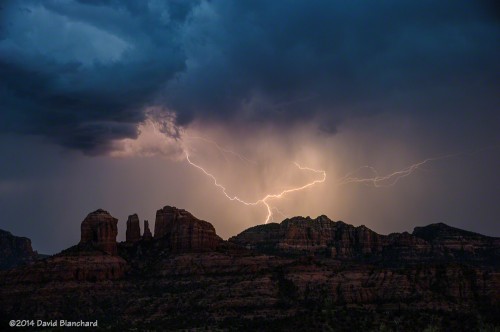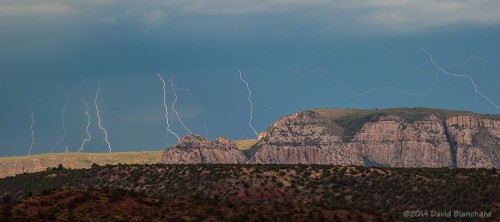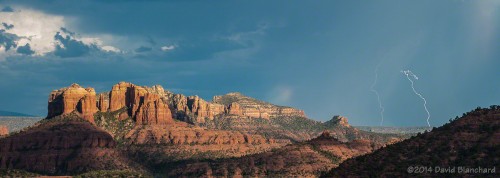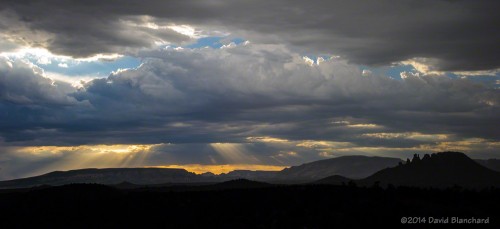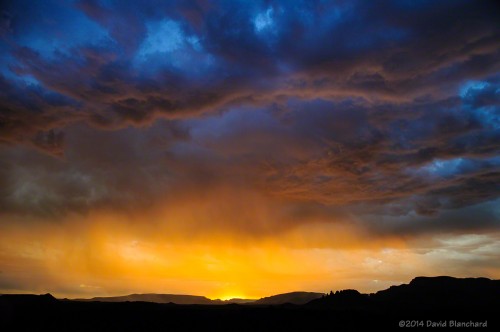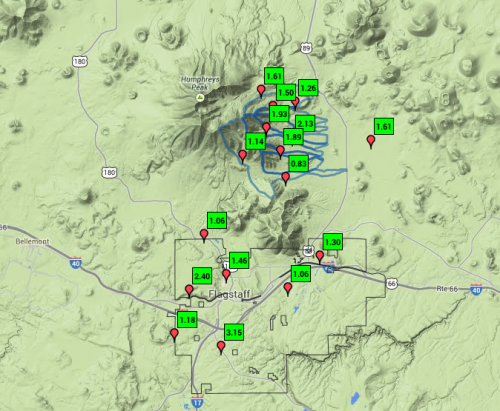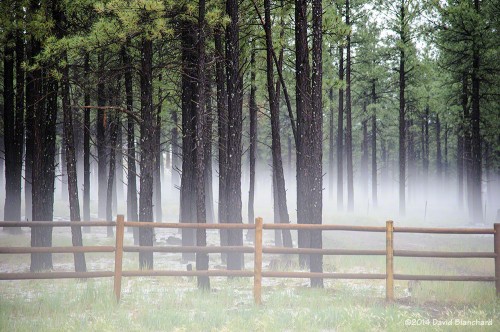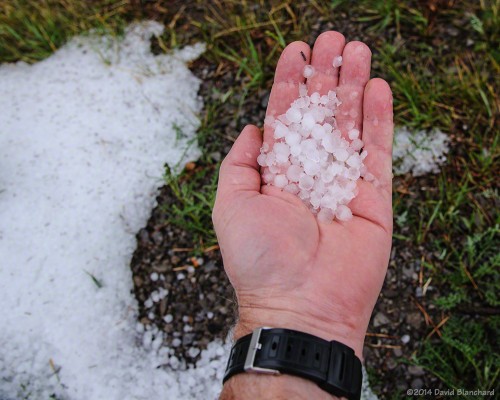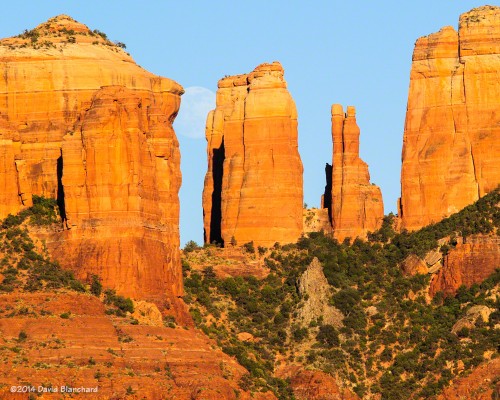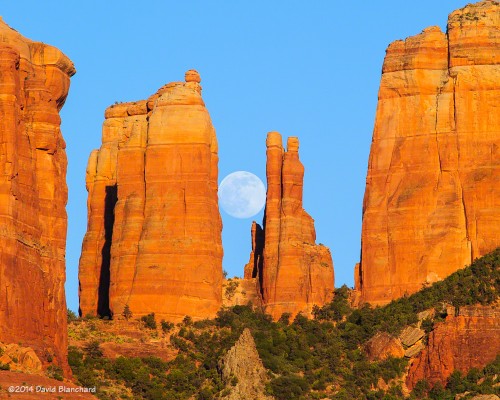I had another opportunity to head on down the hill to Sedona the other day and try to capture lightning flashes as storms moved across the area. A friend had told me about a nice spot to photograph lightning near and behind Cathedral Rock. The location works well because the view of Cathedral Rock shows all the gaps between the various spires.
The following is a sequence of three shots fired off in rapid succession covering a time of between 1 and 2 seconds. The exposure settings were 1/4 second, ISO 200, 75mm, and f/8. The Lightning Trigger was used to trigger the camera. The EXIF data for the three images show times of 19:35:01, 19:35:02, and 19:35:02.
- The first flash arced down from the cloud and to the right but did not strike ground.
- The second flash followed the same channel as the first flash while a second channel to its right went from cloud to ground.
- The third flash only contained the channel on the right.
The final image is a composite off all three images. Truly, it does not do full justice to how long-lasting and multi-stroked this lightning flash was.
